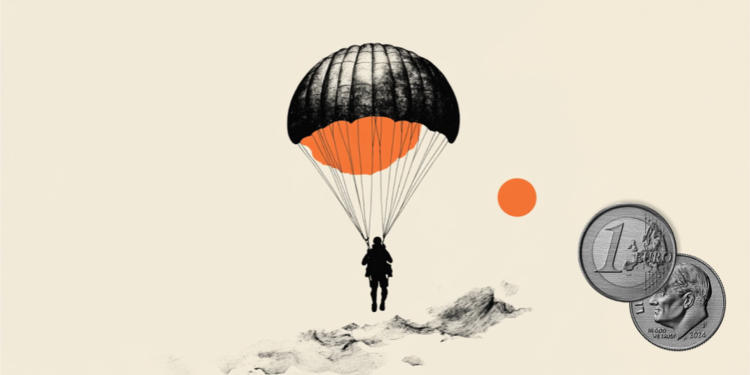- The Japanese yen appreciated as labor cash earnings rose 3.6% year-on-year in July.
- BoJ board member Hajime Takata said the domestic economy is recovering moderately although some signs of weakness were observed.
- Rising US Treasury yields provide support to the US Dollar.
The Japanese Yen (JPY) is holding firm against the US Dollar (USD), boosted by the second consecutive month of rising real wages in Japan. In July, Japan’s cash earnings grew by 3.6% year-on-year, a slowdown from the 4.5% increase in June but the highest since January 1997, beating market expectations of 3.1%. This strong performance reinforces speculation that the Bank of Japan (BoJ) could implement another interest rate hike before the end of 2024.
Bank of Japan (BoJ) board member Hajime Takata made some comments on the bank’s policy outlook and economic prospects during his speech on Thursday. Japan’s economy is recovering moderately although some signs of weakness were observed. The stock and currency markets have seen significant volatility, but we still see the achievement of our inflation target in sight.
The US Dollar is recovering its recent losses, boosted by improving US Treasury yields. However, the Dollar faced challenges after US JOLTS job openings in July came in below expectations, signaling a further slowdown in the labor market. Traders now await the ISM Services PMI and Initial Jobless Claims data scheduled for Thursday.
Daily Market Wrap: Japanese Yen remains strong as real wages rise in July
- San Francisco Federal Reserve President Mary Daly said Wednesday that “the Fed needs to cut the policy rate as inflation is declining and the economy is slowing.” As for the size of a potential rate cut in September, Daly noted, “We don’t know yet.” FXStreet’s FedTracker, which measures the tone of Fed officials’ speeches on a dovish-to-hawkish scale from 0 to 10 using a custom AI model, rated Daly’s words as neutral with a score of 3.6.
- Atlanta Federal Reserve President Raphael Bostic said the Fed is in a favorable position but added that they should not maintain a restrictive policy stance for too long, according to Reuters. FXStreet’s FedTracker, which measures the tone of Fed officials’ speeches on a dovish-to-hawkish scale from 0 to 10 using a custom AI model, rated Bostic’s words as neutral with a score of 4.6.
- Japan’s Chief Cabinet Secretary Yoshimasa Hayashi said on Wednesday that he is “closely monitoring domestic and international market developments with a sense of urgency.” Hayashi stressed the importance of conducting fiscal and economic policy management in close coordination with the Bank of Japan (BoJ).
- U.S. JOLTS job openings fell to 7.673 million in July from 7.910 million in June, marking the lowest level since January 2021 and falling short of market expectations of 8.10 million.
- Jibun Bank’s services PMI data on Wednesday. The index was revised to 53.7 in August from an initial estimate of 54.0. Although this marks the seventh consecutive month of expansion in the services sector, the latest figure remains unchanged from July.
- The US ISM manufacturing PMI rose to 47.2 in August from 46.8 in July, missing market expectations of 47.5. This marks the 21st contraction in US manufacturing activity in the past 22 months.
- On Tuesday, Japan announced plans to allocate ¥989 billion to fund energy subsidies in response to rising energy costs and resulting pressures on the cost of living.
- The U.S. Bureau of Economic Analysis reported on Friday that the headline Personal Consumption Price Index (PCE) rose 2.5% year-over-year in July, matching the previous reading of 2.5% but missing the 2.6% estimate. Meanwhile, the core PCE, which excludes volatile food and energy prices, rose 2.6% year-over-year in July, consistent with the previous reading of 2.6% but slightly below the consensus of 2.7%.
Technical Analysis: USD/JPY remains below 144.00, support appears around seven-month lows
USD/JPY is trading around 143.80 on Thursday. An analysis of the daily chart shows that the nine-day exponential moving average (EMA) remains below the 21-day EMA, signaling a sustained bearish bias in the market. Additionally, the 14-day Relative Strength Index (RSI) is holding near the 30 level, confirming the ongoing bearish momentum but also suggesting a possible upward correction in the near term.
On the downside, support could be found near the seven-month low of 141.69, recorded on August 5. Additional key support appears at 140.25, which is the lowest level since July 2023.
In terms of resistance, the pair could find a barrier first at the nine-day EMA around 145.00, followed by the 21-day EMA at 146.32. A break above these EMAs could dampen the bearish sentiment and help the pair move towards the psychological level of 150.00.
USD/JPY: Daily Chart
Japanese Yen PRICE Today
The table below shows the Japanese Yen (JPY) exchange rate against major currencies today. The Japanese Yen was the strongest currency against the Swiss Franc.
| USD | EUR | GBP | JPY | CAD | AUD | NZD | CHF | |
|---|---|---|---|---|---|---|---|---|
| USD | 0.06% | 0.00% | 0.04% | 0.03% | 0.00% | -0.03% | 0.07% | |
| EUR | -0.06% | -0.04% | 0.02% | 0.01% | -0.03% | -0.04% | -0.00% | |
| GBP | -0.00% | 0.04% | 0.04% | 0.05% | 0.00% | 0.00% | 0.04% | |
| JPY | -0.04% | -0.02% | -0.04% | -0.01% | -0.06% | -0.09% | 0.00% | |
| CAD | -0.03% | -0.01% | -0.05% | 0.00% | -0.02% | -0.05% | 0.00% | |
| AUD | -0.00% | 0.03% | 0.00% | 0.06% | 0.02% | -0.01% | 0.05% | |
| NZD | 0.03% | 0.04% | -0.00% | 0.09% | 0.05% | 0.01% | 0.05% | |
| CHF | -0.07% | 0.00% | -0.04% | -0.01% | -0.01% | -0.05% | -0.05% |
The heatmap shows percentage changes of major currencies. The base currency is selected from the left column, while the quote currency is selected from the top row. For example, if you choose the Japanese Yen from the left column and move along the horizontal line to the US Dollar, the percentage change shown in the chart will represent the JPY (base)/USD (quote).
Japanese Yen FAQs
The Japanese Yen (JPY) is one of the most traded currencies in the world. Its value is determined broadly by the performance of the Japanese economy, but more specifically by the policy of the Bank of Japan, the spread between Japanese and US bond yields, and risk sentiment among traders, among other factors.
One of the Bank of Japan’s mandates is currency control, so its moves are key to the Yen. The BoJ has intervened directly in currency markets on occasion, usually to lower the value of the Yen, although it often refrains from doing so due to political concerns of its major trading partners. The BoJ’s current ultra-loose monetary policy, based on massive stimulus to the economy, has caused the Yen to depreciate against its major currency peers. This process has been exacerbated more recently by a growing policy divergence between the BoJ and other major central banks, which have opted to sharply raise interest rates to fight decades-old levels of inflation.
The Bank of Japan’s stance of maintaining an ultra-loose monetary policy has led to an increase in policy divergence with other central banks, in particular with the US Federal Reserve. This favours the widening of the spread between US and Japanese 10-year bonds, which favours the Dollar against the Yen.
The Japanese Yen is often considered a safe haven investment. This means that in times of market stress, investors are more likely to put their money into the Japanese currency due to its perceived reliability and stability. In turbulent times, the Yen is likely to appreciate against other currencies that are considered riskier to invest in.
Source: Fx Street
I am Joshua Winder, a senior-level journalist and editor at World Stock Market. I specialize in covering news related to the stock market and economic trends. With more than 8 years of experience in this field, I have become an expert in financial reporting.








